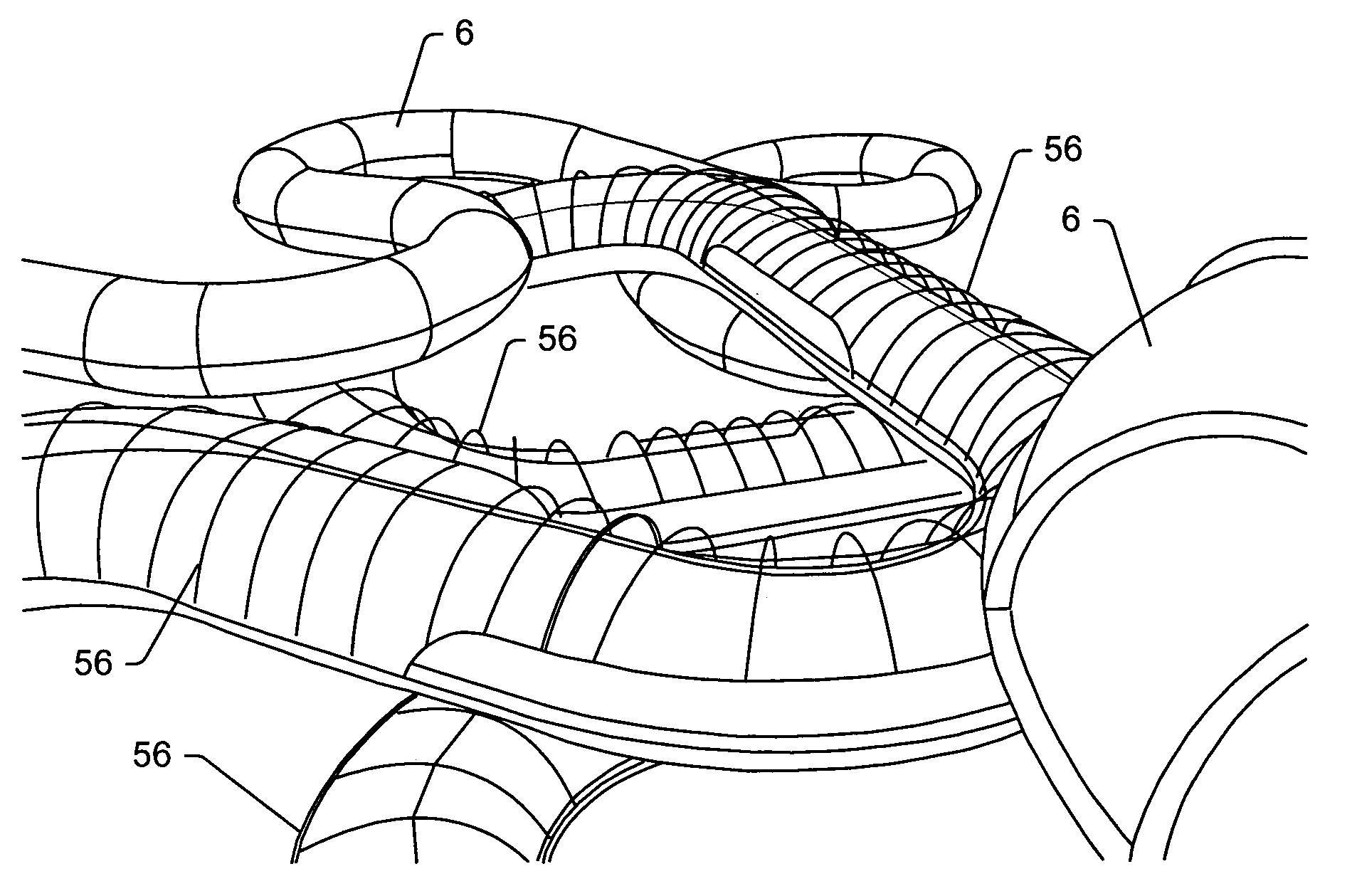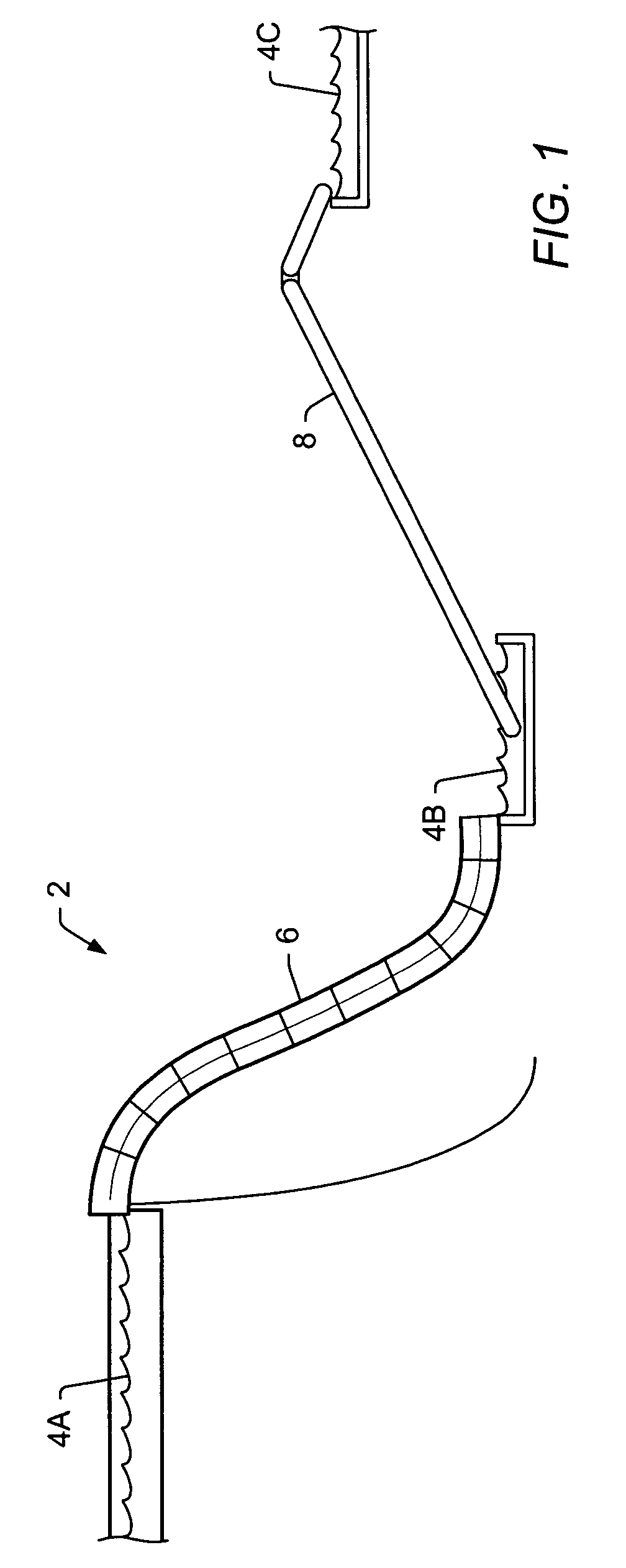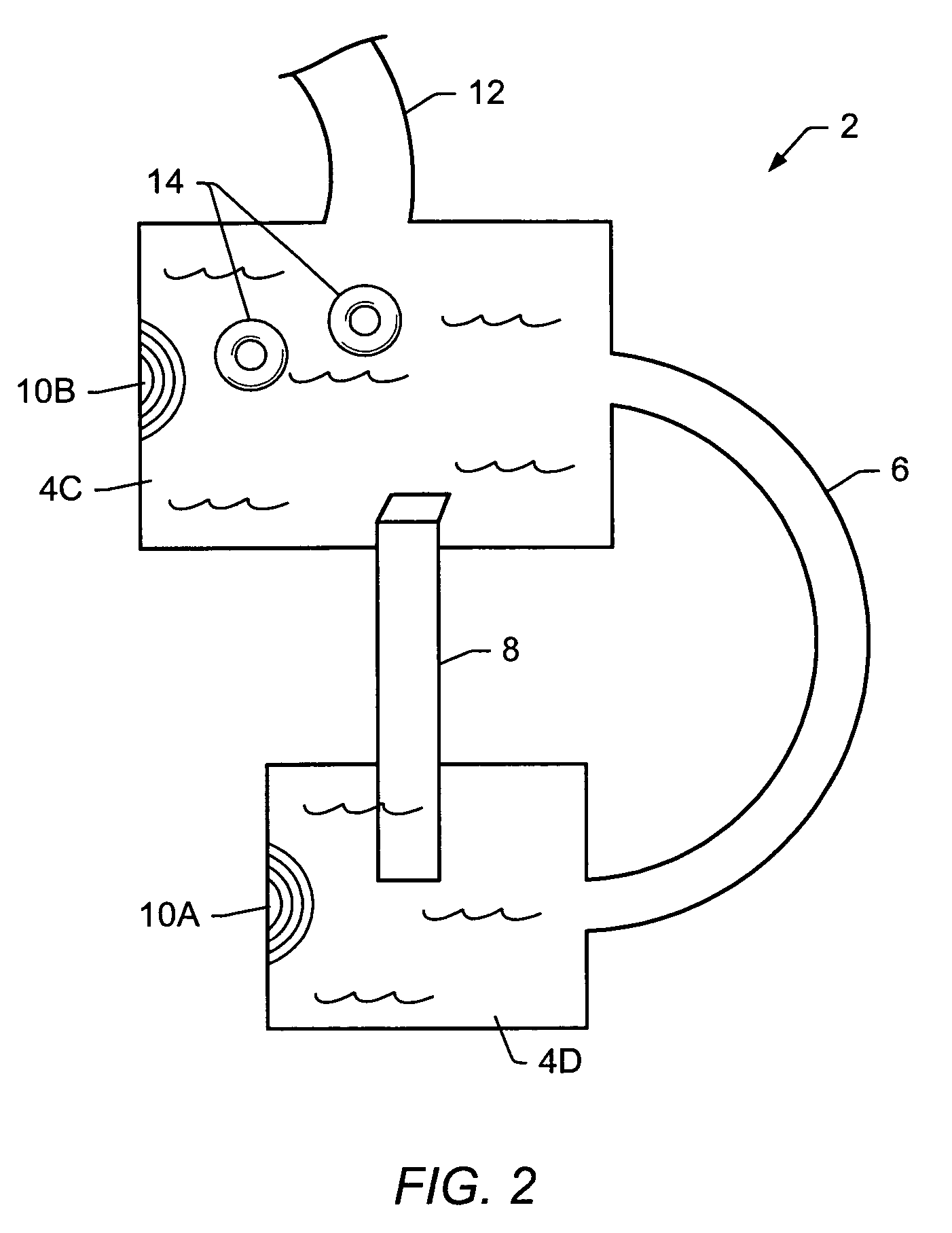Method and system of positionable covers for water amusement parks
a technology of water amusement park and positionable cover, which is applied in the field of water amusement park and ride system, can solve the problems of limited throughput capacity, short duration of traditional downhill water ride, and long queue line waits, so as to reduce or eliminate disadvantages and keep riders cool
- Summary
- Abstract
- Description
- Claims
- Application Information
AI Technical Summary
Benefits of technology
Problems solved by technology
Method used
Image
Examples
Embodiment Construction
[0048]It is to be understood the present invention is not limited to particular devices or biological systems, which may, of course, vary. It is also to be understood that the terminology used herein is for the purpose of describing particular embodiments only, and is not intended to be limiting. As used in this specification and the appended claims, the singular forms “a”, “an”, and “the” include singular and plural referents unless the content clearly dictates otherwise. Thus, for example, reference to “a linker” includes one or more linkers.
Definitions
[0049]Unless defined otherwise, all technical and scientific terms used herein have the same meaning as commonly understood by one of ordinary skill in the art.
[0050]The term “chamber” as used herein generally refers to an at least partially enclosed space.
[0051]The term “connected” as used herein generally refers to pieces which may be joined or linked together.
[0052]The term “coupled” as used herein generally refers to pieces whic...
PUM
 Login to View More
Login to View More Abstract
Description
Claims
Application Information
 Login to View More
Login to View More - R&D
- Intellectual Property
- Life Sciences
- Materials
- Tech Scout
- Unparalleled Data Quality
- Higher Quality Content
- 60% Fewer Hallucinations
Browse by: Latest US Patents, China's latest patents, Technical Efficacy Thesaurus, Application Domain, Technology Topic, Popular Technical Reports.
© 2025 PatSnap. All rights reserved.Legal|Privacy policy|Modern Slavery Act Transparency Statement|Sitemap|About US| Contact US: help@patsnap.com



